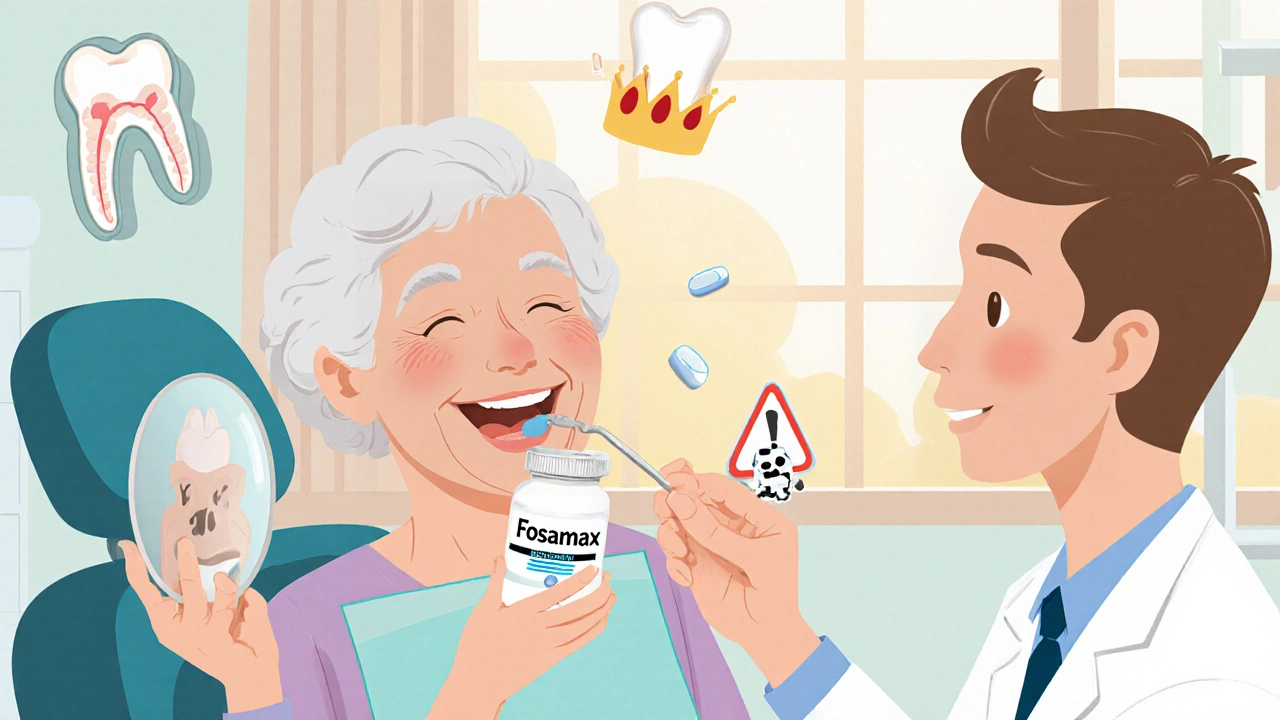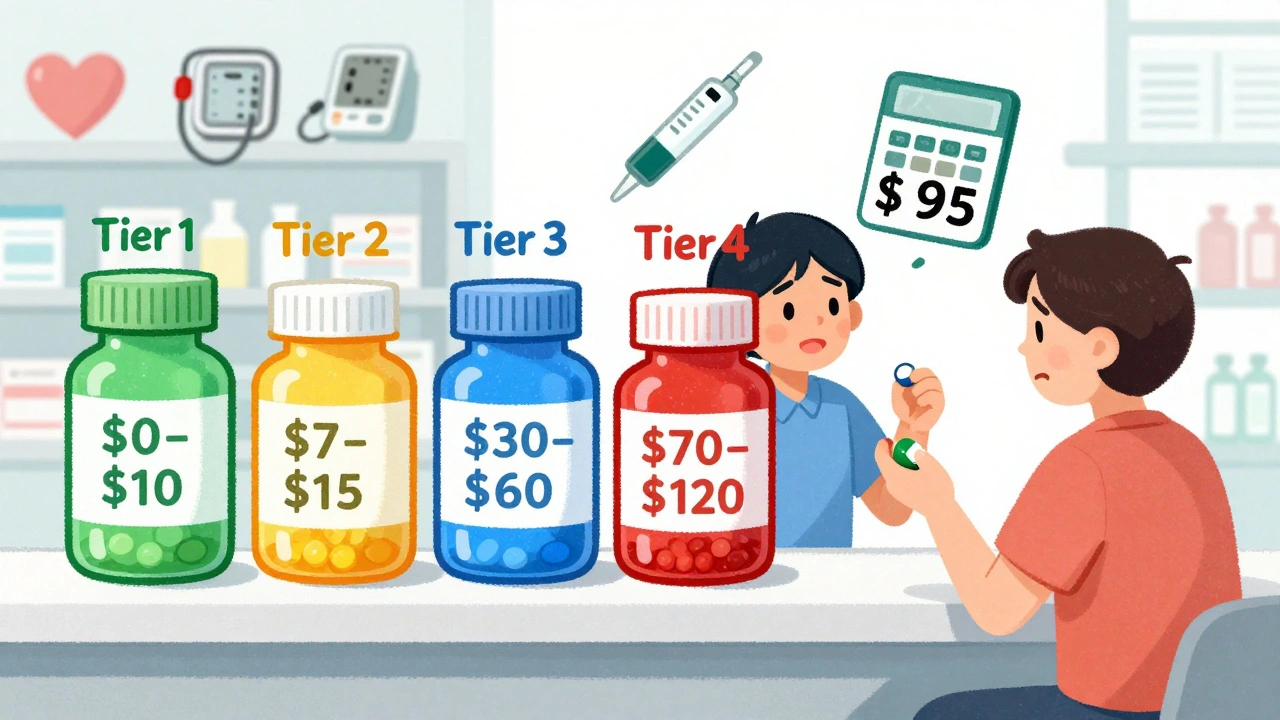Osteoporosis is a condition where bones become weak and brittle, often leading to fractures. While it is commonly associated with women, especially postmenopausal women, men are not immune to this condition.
Understanding the myths and misconceptions about osteoporosis in men is crucial for recognizing and managing the risk. Many men do not realize that they can develop osteoporosis, or they think it is a rare condition for males.
In reality, millions of men worldwide are affected by osteoporosis, leading to serious health problems. By debunking myths and acknowledging the facts, men can take the necessary steps to preserve their bone health.
Let's delve into some common myths, examine key facts, understand risk factors specific to men, and explore practical ways to prevent and manage osteoporosis.
- Myths about Osteoporosis in Men
- Understanding Osteoporosis: Facts and Statistics
- Risk Factors Specific to Men
- Prevention and Management Tips
Myths about Osteoporosis in Men
One of the biggest myths is that osteoporosis is a condition that only affects women. It's often depicted in media and advertisements showcasing postmenopausal women dealing with brittle bones. This misconception can lead men to ignore their bone health, thinking they're not at risk. Nonetheless, osteoporosis in men is a silent yet significant issue. According to the National Osteoporosis Foundation, up to one in four men over the age of 50 will break a bone due to osteoporosis. These statistics highlight the importance of raising awareness and dispelling the myth that men are not susceptible to this condition.
Another common myth is that osteoporosis is an 'old person's disease'. While it's true that the risk increases with age, men can start to lose bone density as early as their 30s. This early bone loss can set the stage for more serious issues later in life if not addressed. Men's bone health can significantly impact their quality of life, making early prevention and management essential.
Many also believe that only inactive or frail men are at risk of osteoporosis. Although a sedentary lifestyle is indeed a risk factor, even highly active men can suffer from osteoporosis. Factors such as genetics, diet, and long-term use of certain medications can contribute to bone density loss regardless of physical activity levels. It's crucial to understand that maintaining bone health goes beyond just exercise; it is a multi-faceted approach involving nutrition, lifestyle choices, and regular medical check-ups.
There is also a widespread belief that if a man feels healthy, his bones must be strong too. Osteoporosis is often called a 'silent disease' because there are usually no symptoms until a fracture occurs. This makes regular screening and bone density tests vital, especially for men with risk factors such as a family history of osteoporosis, smoking, or excessive alcohol consumption. Early detection through these screenings can prevent severe bone loss and fractures down the road.
Myth: Calcium Supplements Alone Will Prevent Osteoporosis
It's a common assumption that popping a daily calcium pill will keep osteoporosis at bay. While calcium is critical for bone health, it's not a cure-all. Bones also need vitamin D to absorb calcium efficiently, along with other nutrients like magnesium and phosphorus. Men should aim for a balanced diet rich in these nutrients to support their bone health. Simply relying on supplements without considering the bigger picture can lead to deficiencies and other health issues.
Lastly, some think that osteoporosis is not dangerous because fractures will heal as they always have. This myth can be particularly harmful. Fractures due to osteoporosis can lead to severe complications, prolonged disability, and even an increased risk of death. For example, hip fractures in men come with a higher mortality rate than in women. Taking osteoporosis seriously and recognizing its potential impact is vital for long-term health and well-being.
Dr. Robert Marcus, a well-respected figure in osteoporosis research, once said: "Understanding the silent progression of osteoporosis is key to implementing proactive measures that can save lives and reduce fractures significantly."
Breaking down these myths and facing the facts about osteoporosis in men is the first step toward better bone health. By recognizing that men, too, are at risk for this 'silent disease', we can foster a more inclusive approach to prevention, screening, and treatment strategies.
Understanding Osteoporosis: Facts and Statistics
When thinking about osteoporosis, many people imagine it as a problem that predominantly affects women. However, this condition does not discriminate by gender. Millions of men are silently suffering from osteoporosis, and many do not even realize it until they experience a fracture.
One of the surprising facts is that, by the age of 50, up to one in four men will break a bone due to osteoporosis. This is a staggering figure that highlights just how crucial it is for men to be aware of their bone health. Men typically begin to lose bone mass after the age of 40. By the time they reach their 70s, their risk of osteoporosis-related fractures increases significantly.
Osteoporosis is often called a 'silent disease' because bone loss occurs without any symptoms until the bones are so weakened that a sudden strain, bump, or fall causes a fracture. – National Osteoporosis Foundation
It's important to recognize the signs and get regular check-ups. Bone density tests can help determine the health of your bones. Worldwide, it is estimated that osteoporosis causes more than 8.9 million fractures annually, which equals one fracture every three seconds. That includes a significant percentage among men. While women are more commonly diagnosed, men have a higher mortality rate following osteoporotic fractures.
Why Men are Overlooked
One of the reasons why men are often overlooked in osteoporosis discussions is due to the misconception that this is a 'women's disease'. Historically, comprehensive studies and data have focused more on women. But recent research is bringing to light critical data about men’s bone health. For instance, the International Osteoporosis Foundation states that a man is twice as likely to die after a hip fracture compared to a woman.
Commonly affected areas include the hips, spine, and wrists. These fractures can be life-altering, leading to loss of mobility, independence, and may even result in long-term disability. Detection and prevention are key. Knowing that the risks are real and that osteoporosis can affect anyone will drive more men to seek help and take preventive measures.
Essential Statistics to Consider
According to the Osteoporosis Foundation, approximately 2 million American men suffer from osteoporosis, and another 12 million are at risk. Men over 50 have a 27% likelihood of experiencing an osteoporotic fracture, which is higher than the risk of developing prostate cancer. Studies have shown that men who have fractured a bone due to osteoporosis are less likely to receive proper diagnosis and treatment compared to women.
| Age Group | Prevalence of Fractures |
|---|---|
| 50-60 | 10% |
| 60-70 | 20% |
| 70-80 | 30% |
| 80 and above | 40% |
These statistics demonstrate that the older a man gets, the more likely he is to suffer from fractures due to osteoporosis. It emphasizes the importance of early intervention and lifestyle changes that can strengthen bones and reduce the risk. For instance, regular weight-bearing exercises, increasing vitamin D and calcium intake, and avoiding smoking and excessive alcohol use are practical steps that can significantly impact bone health.
Risk Factors Specific to Men
When it comes to osteoporosis, there are several risk factors that are particularly relevant to men. Recognizing these factors can help in early detection and prevention. One of the most significant risk factors is age. As men get older, their bone density starts to decrease, making them more susceptible to osteoporosis. This is especially true for men over the age of 50.
Another crucial factor is hormonal changes. While this is often discussed in the context of women and menopause, men also experience hormonal changes as they age. A drop in testosterone levels, a condition known as andropause or male menopause, can negatively impact bone density. Lower levels of testosterone mean less stimulation for bone formation, leading to weaker bones over time.
Genetics also play a role. If a man has a family history of osteoporosis or fractures, his risk is higher. Genetic factors can determine bone density and structure, influencing the likelihood of developing osteoporosis. It's essential to know your family's medical history to be proactive about your bone health.
Poor lifestyle choices are another significant contributor. Men who smoke or consume excessive alcohol are at a higher risk. Smoking interferes with the body's ability to absorb calcium, while alcohol can decrease bone formation and speed up bone loss. A diet low in calcium and vitamin D can also lead to weaker bones. Men need to ensure they get enough of these nutrients through their diet or supplements.
Certain medical conditions and medications can also contribute to osteoporosis in men. Chronic conditions such as rheumatoid arthritis, kidney disease, and gastrointestinal disorders can affect bone health. Long-term use of corticosteroids and other drugs can also lead to bone loss. Men with these conditions or on such medications should have regular bone density tests to monitor their bone health.
According to the National Osteoporosis Foundation, “Up to one in four men over age 50 will break a bone due to osteoporosis.” This statistic highlights the importance of awareness and early intervention.
Lack of physical activity is another risk factor. Men who lead a sedentary lifestyle are more likely to experience bone loss. Weight-bearing exercises like walking, jogging, and weightlifting can help maintain bone density. Incorporating regular physical activity into daily routines is vital for bone health.
Dietary choices also play a significant role. Men often consume fewer dairy products compared to women, leading to lower calcium intake. Ensuring an adequate intake of calcium-rich foods like milk, cheese, yogurt, and green leafy vegetables can help improve bone strength. In addition, vitamin D is essential for calcium absorption, so spending time outdoors and considering supplements if necessary can be beneficial.
Lastly, it's important to note that certain populations are at a higher risk. For example, Caucasian and Asian men are more prone to osteoporosis compared to African American and Hispanic men. Understanding these demographic factors can aid in targeted prevention and awareness efforts.
By being aware of these risk factors, men can take proactive steps to maintain their bone health. Regular check-ups, a balanced diet, physical activity, and avoiding harmful habits like smoking and excessive drinking can make a significant difference in preventing osteoporosis.
Prevention and Management Tips
Preventing and managing osteoporosis in men requires a proactive approach. The good news is that there are effective strategies to keep your bones healthy and strong. A combination of lifestyle changes, dietary adjustments, and medical interventions can make a significant difference.
1. Diet and Nutrition: One of the key aspects of preventing osteoporosis is maintaining a diet rich in calcium and vitamin D. Calcium is essential for bone strength, while vitamin D helps in the absorption of calcium. Good sources of calcium include dairy products, leafy green vegetables, and fortified foods. You can get vitamin D from exposure to sunlight, fatty fish, and supplements if necessary.
2. Regular Exercise: Physical activity is vital for bone health. Weight-bearing exercises like walking, jogging, and weight lifting help maintain bone density. Incorporating activities like yoga and pilates can also improve balance and flexibility, reducing the risk of falls and fractures. Aim for at least 30 minutes of exercise most days of the week.
3. Quit Smoking and Limit Alcohol: Smoking and excessive alcohol consumption can weaken bones. If you smoke, seek help to quit. Limiting alcohol to moderate levels can also benefit your bone health. Men should aim to consume no more than two drinks per day.
4. Bone Density Testing: Regular bone density tests can help monitor your bone health. These tests are especially important if you have risk factors such as a family history of osteoporosis, previous fractures, or long-term use of corticosteroids. Your doctor can recommend the appropriate schedule for these tests.
5. Medication: In some cases, medication may be necessary to improve bone density and prevent fractures. Bisphosphonates are commonly prescribed, but other medications like denosumab and teriparatide may also be used based on individual needs. Discuss with your healthcare provider the best options for you.
6. Fall Prevention: Preventing falls is crucial in managing osteoporosis. Simple changes in your home, like securing rugs, installing grab bars in the bathroom, and ensuring good lighting, can minimize the risk of falls. Wearing supportive shoes and avoiding risky activities when alone can also help.
“Osteoporosis-related fractures in men are associated with a higher mortality rate than in women,” notes Dr. Kenneth Saag, a professor of Medicine and Epidemiology. “Preventive measures are therefore critical.”








steph carr
May 16, 2024 AT 13:52Wow, this rundown really hits the nail on the head about how men often overlook bone health. It’s great to see a clear call for regular screenings and a balanced diet. Adding weight‑bearing exercises can make a world of difference, especially after 40. Let’s keep spreading the word so more guys get proactive about their bones!
Stay strong, everyone.
Vera Barnwell
May 25, 2024 AT 20:12Alright, let’s dissect this whole "osteoporosis is just a women’s thing" myth piece by piece. First, the data from the National Osteoporosis Foundation shows that one in four men over 50 will suffer a fracture – that’s not a myth, it’s a hard‑won statistic that the media conveniently ignores. Second, the idea that you have to be old to lose bone density is bogus; bone loss can start in your thirties, especially if you’re a smoker or drink heavily, which is a fact that the tobacco lobby doesn’t want you to know. Third, the belief that only frail or inactive men are at risk is a red herring – even elite athletes have been diagnosed with osteoporosis, which suggests genetics and hormonal shifts play a huge role, something the sports industry rarely admits. Fourth, relying solely on calcium pills is a half‑baked approach; without adequate vitamin D and magnesium, calcium just sits there, not doing its job, a loophole that supplement manufacturers happily exploit. Fifth, the notion that fractures are harmless is a dangerous fallacy – hip fractures in men carry a mortality rate up to 30%, a grim reality that insurance companies would love to downplay. Sixth, the claim that diet alone can fix everything misses the importance of regular bone density tests, a preventative measure that many primary care doctors skimp on due to cost concerns. Seventh, the idea that osteoporosis isn’t a “real” disease because it’s “silent” is an excuse used by pharmaceutical companies to market pricey medications that might have side effects. Eighth, the myth that men don’t need to talk about bone health in the same way women discuss breast health is a cultural blind spot perpetuated by decades of gender‑biased health messaging. Ninth, the story that men are immune because they’re “tough” is a toxic narrative that undermines the very real risk of osteoporosis, an ailment that doesn’t discriminate based on masculinity. Tenth, the claim that lifestyle changes alone are enough without medical supervision overlooks the fact that certain medications, like long‑term steroids, can accelerate bone loss dramatically. Eleventh, the belief that osteoporosis is only about calcium ignores the emerging research on the role of gut health and microbiome in mineral absorption, a field that’s still under the radar of most mainstream health advice. Twelfth, the suspicion that bone health guidelines are biased towards women reflects a broader systemic issue where male health concerns are underfunded and under‑researched. Thirteenth, the stereotype that men won’t notice symptoms until a fracture occurs is a sobering reminder of why early screening is vital. Fourteenth, the idea that you can “just walk it off” after a fracture is laughably naive; recovery can take months and often leads to permanent loss of mobility. Fifteenth, the suggestion that you don’t need a doctor’s advice because you’re “just a guy” is a dangerous message that can lead to delayed treatment and higher costs down the line. In summary, these myths are not merely misconceptions; they’re barriers that keep men from seeking the care they need, and it’s high time we smash them to bits.
David Ross
June 4, 2024 AT 02:32Well, that was an intense deep‑dive, and I completely agree with the need for early screening, especially because men often dismiss subtle signs, and that, in turn, leads to later, more severe fractures, which could have been prevented with regular DXA scans; the more we talk about these risks, the better the outcomes become, and we should all be encouraging each other to get checked, because knowledge truly is power, and there’s no shame in taking that extra step toward maintaining strong bones.
Henry Seaton
June 13, 2024 AT 08:52People need to stop ignoring bone health. It’s not just a women’s issue. Men lose bone mass too. Get a test if you’re over fifty.
Baby Thingie
June 22, 2024 AT 15:12Indeed, routine densitometry is advisable for males over 50; a concise evaluation can preempt serious fractures. :)
Abby Elizabeth
July 1, 2024 AT 21:32Honestly, this whole thing is just overblown.
Mark Haycox
July 11, 2024 AT 03:52Overblown? That’s a laugh. Men’s bones are failing because of lazy health policies and you’re just sitting there downplaying it.
Michael Taylor
July 20, 2024 AT 10:12Hey folks, let’s keep the momentum going! Adding a daily walk or a quick set of push‑ups can really boost bone density over time, and pairing that with a calcium‑rich snack makes the routine even more effective. Remember, small habits build up into big results, so stay consistent and watch those bones get stronger!
Troy Brandt
July 29, 2024 AT 16:32I love the proactive vibe here! Think of each workout as an investment in your future self – stronger bones mean fewer setbacks, more freedom to enjoy the things you love, and less time worrying about injuries. Keep challenging yourself with progressive overload, and don’t forget to top it off with vitamin D‑rich foods like salmon or fortified milk. Consistency is key, and you’ll thank yourself later when you’re still moving freely.
Barbra Wittman
August 7, 2024 AT 22:52Wow, look at us getting all health‑conscious. Who would’ve thought we’d be swapping fitness tips like a group of seasoned gym rats? Yet, here we are, dishing out bone‑building advice like it’s the latest meme, and honestly, it’s refreshing to see the community actually caring about something beyond video games.
Gena Thornton
August 17, 2024 AT 05:12To add on, integrating balance training such as tai chi or yoga can reduce fall risk, which is a major factor in fracture prevention. Combining that with adequate protein intake supports overall musculoskeletal health, making the whole regimen more comprehensive.
Lynnett Winget
August 26, 2024 AT 11:32Picture this: you’re out on a hike, the sun’s blazing, and your bones are humming along, sturdy as a mountain. That’s the power of a well‑rounded routine – cardio, strength, and the right nutrients. Let’s keep the conversation alive and inspire each other to stay active and nourished.
Amy Hamilton
September 4, 2024 AT 17:52Exactly, fostering a community that values bone health transcends gender; it’s about cultivating longevity, resilience, and shared responsibility for our physical well‑being, which ultimately enriches society as a whole.
Lewis Lambert
September 14, 2024 AT 00:12Indeed, let’s remember that each small habit-whether it’s a daily walk, a calcium‑packed snack, or a quick set of squats-acts as a building block for stronger bones, and together we can create a ripple effect that benefits everyone’s health.
Tamara de Vries
September 23, 2024 AT 06:32Don't forget to get some sun for vitamin D, and try to cut back on smocking if you can, it helps a lot.
Jordan Schwartz
September 29, 2024 AT 13:52Absolutely, a balanced approach that includes sunlight, a varied diet, and regular activity makes a real difference; keep encouraging each other to stay on track, and the results will follow.